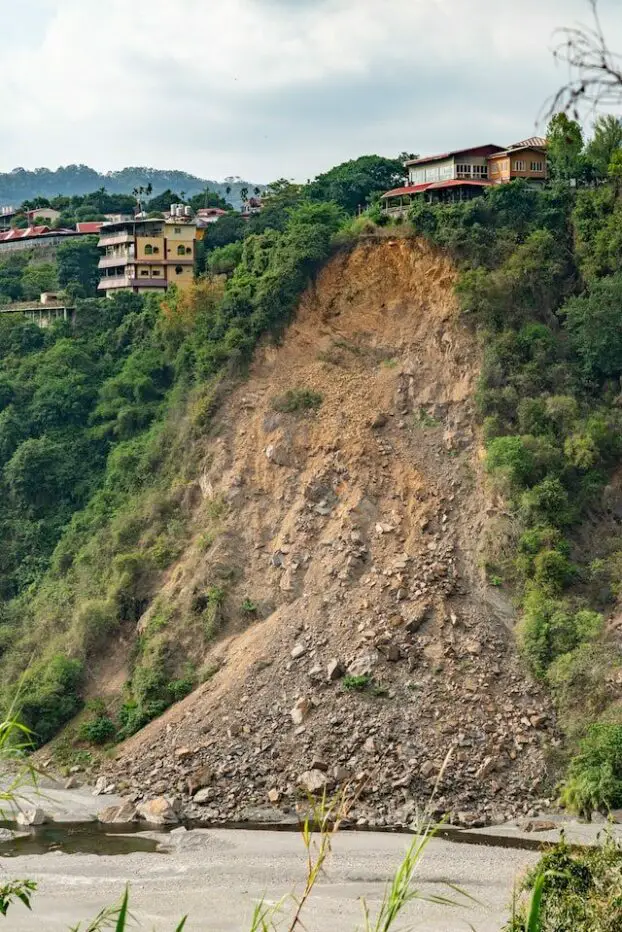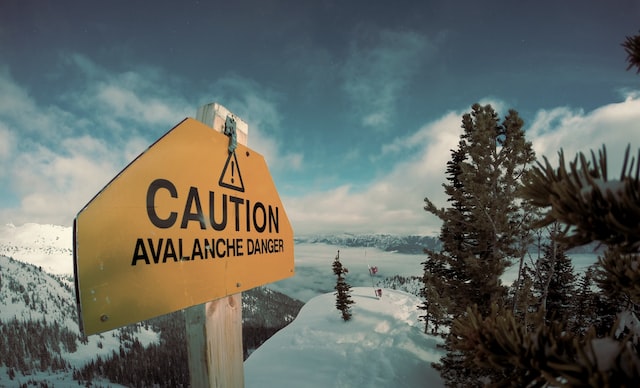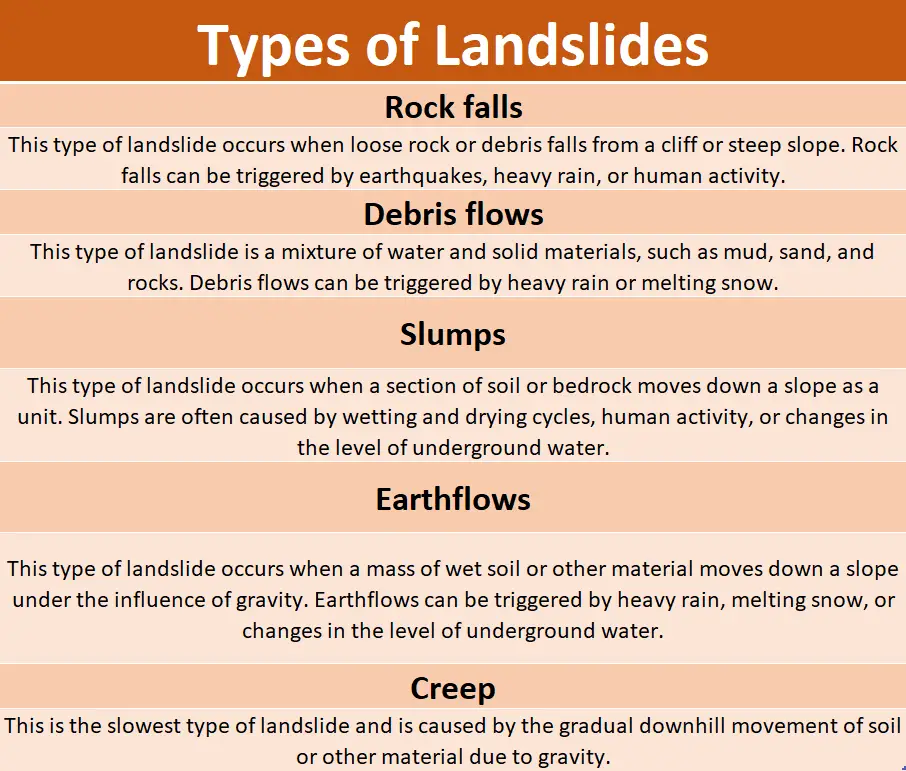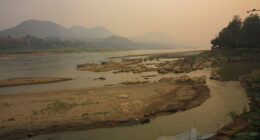Landslides and avalanches are two natural hazards that can cause a significant amount of damage. Both landslides and avalanches occur when masses of materials, including soil, rocks, ice and snow, move down the side of a mountain or cliff under the force of gravity. Landslides tend to be slower moving than avalanches with more mass spread over a wider area whereas an avalanche typically occurs rapidly and is concentrated in one area.
What are landslides?
(Photo By Jacky Barrit from Pixabay)

Landslides are a type of mass movement that refers to the downslope movement of rock, soil, or debris. Landslides can occur when the slope of the ground is unstable and unable to support the weight of the material on it. This can be caused by factors such as rainfall, earthquakes, or human activity.
Landslides can vary in size, from small slides that only involve a few cubic meters of material to large catastrophic slides that can cover entire hillsides. The effects of landslides can also vary, from minor damage to buildings and infrastructure to loss of life.
What are avalanches?
(Photo By Timo Volz on Unsplash)

Avalanches are one of the most dangerous natural disasters that can occur in mountainous regions. They happen when a large mass of snow and ice suddenly breaks loose from a mountainside and comes crashing down the slope. Avalanches can also be triggered by an earthquake or by human activity, such as skiing or hiking.
Avalanches are extremely destructive and can bury entire villages under tons of snow and debris. Hundreds of people are killed by avalanches every year, especially in countries like Nepal and India where many villages are located in avalanche-prone areas.
Avalanches are notoriously difficult to predict, which makes them all the more dangerous. However, there are some warning signs that an avalanche may be about to occur, such as sudden cracking noises or the appearance of fresh snow on a slope that hasn’t seen any recent snowfall.
Landslides Vs. Avalanches – Key differences
Landslides occur when a mass of earth or rock moves down a slope. They can be triggered by factors such as rainfall, earthquakes, and volcanoes. Avalanches, on the other hand, are more specifically defined as a rapid flow of snow down a mountainside. Like landslides, they can also be caused by factors such as rainfall and earthquakes.
One of the main differences between these two types of events is their speed. Landslides can happen relatively slowly, over days or even weeks. Avalanches, on the other hand, happen very quickly and can often take people by surprise.
Another difference is the type of damage that they can cause. Landslides tend to cause more damage to infrastructures, such as buildings and roads. Avalanches typically cause more loss of life, because they can bury people under tons of snow.
Both landslides and avalanches can have devastating impacts. It is important to be aware of the differences between them to be better prepared in case either one should occur in your area.
The causes of landslides and avalanches
There are several possible causes of landslides, including rain, earthquakes, and volcanoes. Heavy rains can soften the ground and make it more likely to collapse. Earthquakes can also trigger landslides by shaking the ground and causing it to loosen. Volcanoes can cause landslides when they erupt and send hot ash and rock flowing down the slopes.
Avalanches are most often caused by heavy snowfall, but they can also be triggered by things like loud noises or vibrations. When too much snow accumulates on a slope, it becomes unstable and can collapse suddenly, causing an avalanche.
How to prevent landslides and avalanches
Landslides and avalanches are two very different natural disasters. Here’s how to prevent each one:
-Landslides occur when an entire mass of earth suddenly shifts and moves down a slope. To prevent this, it’s important to keep the area around your home or business free of debris and clutter. If you live in an area prone to landslides, consider investing in retaining walls or other stabilizing structures.
-Avalanches happen when a large mass of snow or ice suddenly breaks loose and comes tumbling down a mountainside. To avoid being caught in an avalanche, it’s important to know the conditions of the terrain before heading out into the wilderness. Be sure to check the local avalanche forecast and heed all warning signs. If you’re caught in an avalanche, try to grab onto something sturdy like a tree or boulder to help stop your fall.
Can a human survive an avalanche?
If someone is caught in an avalanche, their chances of survival depend on a severalactors, including the size and speed of the avalanche, how deep they are buried, and whether they have access to air.
Generally speaking, the deeper someone is buried, the less likely they are to survive. Avalanches can travel at speeds of up to 150 mph, so being buried beneath even a few feet of snow can be fatal. And if someone is completely buried and doesn’t have access to air, they will suffocate within minutes.
That said, there have been some miraculous stories of people surviving avalanches. In 2012, for example, a skier in Austria was buried beneath 15 feet of snow for over two hours before being found alive.
So while it is possible to survive an avalanche, it is certainly not something that anyone would want to go through. The best way to avoid becoming a victim of an avalanche is to be aware of the conditions in mountainous regions and to always check the local forecast before heading into areas where avalanches are possible.
What can stop an avalanche?
Many things can stop an avalanche. If the snow is not deep enough, it will not be able to carry enough material to start an avalanche. Also, if the slope is not steep enough, the snow will not gain enough speed to create an avalanche. Additionally, if there are trees or other obstacles on the slope, they can provide resistance and stop the snowball from gaining enough momentum to become an avalanche. Finally, if the temperature is too warm, the snow will not be as dense and will not be able to hold together as well, making it less likely to create an avalanche.
Frequently asked questions about avalanches and landslides
Are avalanches faster than landslides?
Avalanches are typically much faster than landslides. They can reach speeds of up to 80 miles per hour, which is why they are so dangerous. Landslides, on the other hand, tend to move at a more gradual pace. While they can still cause damage and even fatalities, they are not as sudden or as fast as avalanches.
Are avalanches wet or dry?
Avalanches are typically either wet or dry. Wet avalanches have a higher water content, which makes them denser and heavier. Dry avalanches have a lower water content and are usually lighter and powdered. Both types of avalanches can be dangerous, but wet avalanches are generally more destructive because of their greater weight.
What was the biggest avalanche?
The largest recorded avalanche in North America happened in 1910 at Rogers Pass in Montana. It was 1 mile wide and 3,800 feet deep!
What was the biggest landslide?
The biggest landslide on record happened in 1980 at Mount St. Helens. This landslide was caused by a volcanic eruption that caused the north face of the mountain to collapse. The slide was about two miles wide and ththree-quartersf a mile deep.
Who is most at risk for landslides?
Landslides can happen to anyone, but some groups of people are more at risk than others. People who live in areas where there is a history of landslides, or who live in areas that are prone to landslides, are more likely to be affected by one. Additionally, people who live in poverty or who have other health vulnerabilities are also at an increased risk for landslides.
Featured Image by Nicolas Cool on Unsplash










